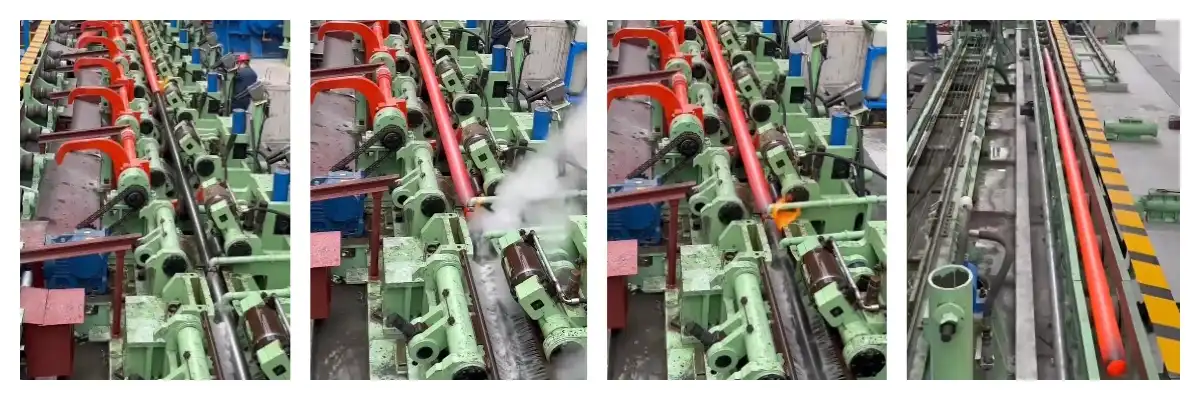- English
- Search
- English
Seamless steel pipe piercing and rolling is a key part of its production process, the following you introduce these two processes in detail:

First, the piercing process
Heating billet
Firstly, the billet is heated to a suitable temperature, usually around 1200℃. This temperature allows the billet to have good plasticity for subsequent processing.
The heating process is usually carried out in a ring furnace or a step-beam furnace to ensure the billet is uniformly heated.
Preparation of the piercing machine
The piercing machine is a core equipment for seamless steel pipe production. It mainly consists of rolls, a top head, a guide plate, and so on.
Before piercing, the piercing machine needs to be adjusted and calibrated to ensure that the position and clearance of each component meet the requirements.
Perforating operation
The heated billet is fed into the piercing machine. The rolls of the piercing machine rotate at high speeds, exerting pressure on the billet and gradually deforming it under the action of the top head.
The shape and size of the head determine the internal diameter of the seamless steel pipe. During the piercing process of seamless steel pipe, the center part of the billet is extruded into a hollow by the head to form a burr pipe.
The guide plate serves to guide the direction of the burr pipe and stabilize the piercing process.
Burr quality control
After piercing, the burrs need to be inspected for quality, mainly checking the wall thickness uniformity, inner diameter size, and surface quality of the burrs.
If quality problems are found, the parameters of the piercing machine need to be adjusted or repaired in time.
Second, the rolling process
Pipe mill preparation
A Pipe mill is the equipment that processes rough pipe into the finished seamless steel pipe. It is usually composed of multiple rolls, which can be rolled for multiple passes of the burr pipe.
Before rolling, it is necessary to adjust and preheat the tube mill to ensure that the surface of the rolls is smooth and the temperature is uniform.
Rolling operation
After the tube is fed into the mill, the rolls gradually compress and extend. Through different passes of rolling, the wall thickness of seamless steel pipe can be gradually reduced, and the outer diameter gradually increased, while improving the dimensional accuracy and surface quality of steel pipe.
In the rolling process, parameters such as rolling speed, rolling force, and roll gap need to be controlled to ensure the stable quality of seamless steel pipe.
Sizing and straightening
After rolling, the seamless steel pipe needs to be sized and straightened. The sizing machine can precisely adjust the outer diameter of the steel pipe to make it meet the specified
size requirements.
The straightening machine is used to eliminate the bending and twisting of the tube and improve the straightness of the tube.
Quality Inspection and Packaging
Finally, the finished seamless steel pipe is subjected to comprehensive quality inspection, including dimensional measurement, mechanical property test, and non-destructive testing.
Qualified seamless steel pipes will be packed for transport and storage. Packaging methods usually include bundling, crating and so on, which are chosen according to customers' requirements.
In conclusion, the piercing and rolling process of seamless steel pipe is a complex and delicate process, which requires strict control of the parameters and quality of each link to ensure the production of high-quality seamless steel pipe products.











